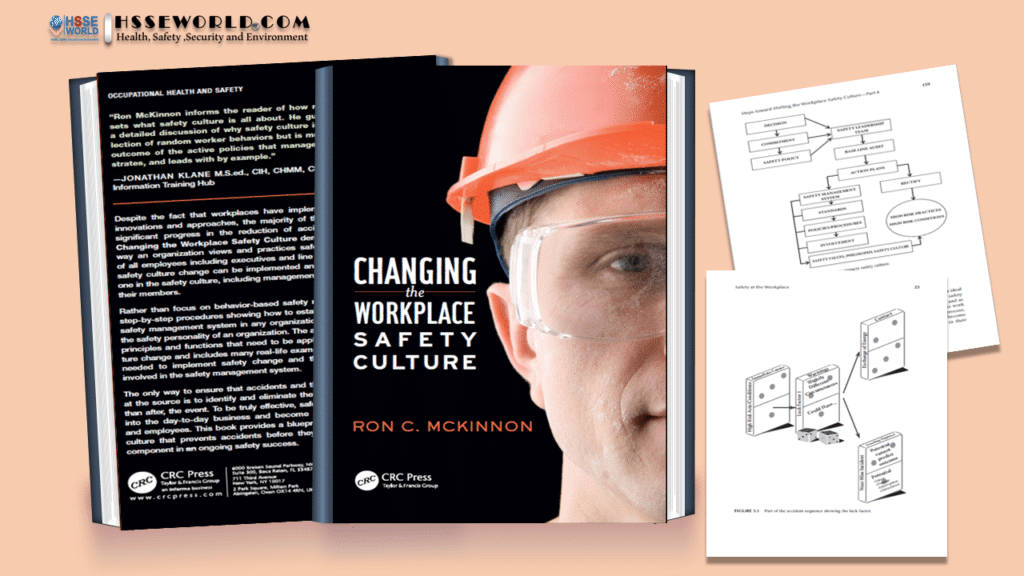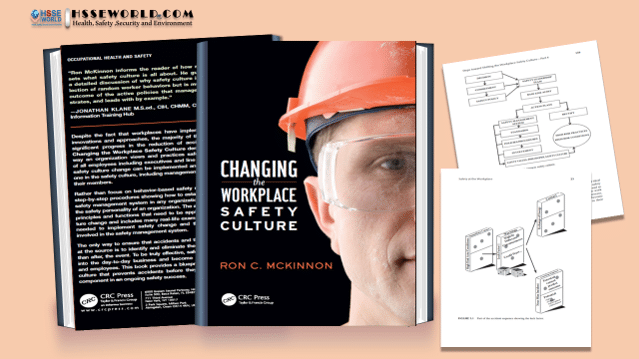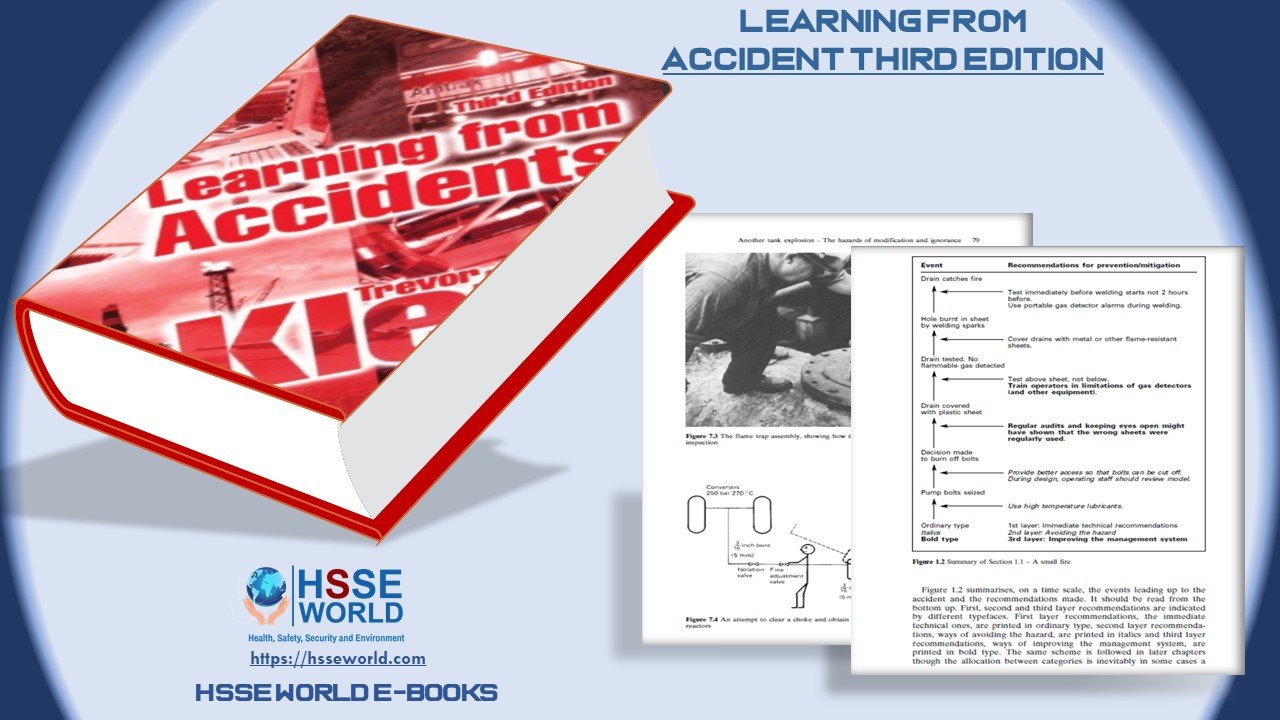
Changing the Workplace Safety Culture by Ron C. McKinnon. This book demonstrates how changing how an organization views and practices safety will impact the behavior of all employees, including executives and line managers. This is not a book about behavior-based safety, but a guideline on how to establish a long-lasting integrated safety culture in an organization. It is about changing the safety personality at workplaces. A shift in safety culture, therefore, is the most effective ongoing key to safety success.
While the injury rate may appear to be decreasing, this could be due to many factors
such as fear of reporting workplace injuries (the fear factor), manipulation of the rules defining reportable injuries, and other sidelining efforts. In some industries, the rising fatality rate is a clear indication that safety is not improving, as fatality rates are the one downstream safety measurement that cannot be manipulated or fudged.
The only way to ensure that accidents and their consequences are tackled at the source is to identify and eliminate the workplace risks before, rather than after, the event. Sometimes this is done as an “add-on” function of management and while effective, it does not embed the ongoing safety process into the fabric of the organization’s culture. The ongoing identification of workplace and worker risks must become a value to an organization and must occur automatically, as part of the culture of the organization, if accidental losses are to be eliminated. Safety activities must be integrated into the day-to-day business and become a way of life for management
and employees.
Also Read: E-Books: Investigating accidents and incidents

Safety culture change is what many safety professionals do on a smaller scale, often with frustrating results. Safety campaigns, posters, training, and other efforts are ineffective, and their results are often short-lived because they do not change the way the organization does business. They are not embraced by the culture of the organization and are often seen as a pain in the neck and a necessary evil. Active safety culture has the greatest potential for preventing accidents before they occur. A shift in safety culture, therefore, is the most effective ongoing key to safety success.
Also Read: How to Develop a Safety Culture?(
Introduction
As we show in Chapter 2, The History of Safety and Safety Culture, the health and safety of employees in the workplace have a poor track record. Even today there is a fine balance in industry between making a bigger profit and reducing the profit by manufacturing products without causing harm to the employee or the environment.
IS SAFETY REALLY FIRST?
One of the safety paradigms discussed in Changing Safety’s Paradigms (McKinnon, 2007) is that safety is first.
That is a real safety myth and until we can move that paradigm from safety first to safety as important as, we will not make progress in loss reduction. In reality what is first in a country’s economy, what is first in the mining industry, the manufacturing industry, the service industry, and any other type of business? Money is first! Profits are first! Production is first! Employee attendance, dedication, and outputs are first!
Money and profits will always be first. Return on shareholders’ investments is first! Making a bigger profit is first! Tonnage, number of units, quality standards, a “better than the competitor’s product,” these are all that is first! Bigger, better, faster selling, that’s what’s first! (p. 15)
Unfortunately, the prevention of accidents has challenged managers for many years, and to date, no silver bullet has been discovered to provide a quick fix to safety problems in the workplace. Many attempts have been made to prevent accidental injuries and deaths, and the trend has been, as with human nature, to take the path of least resistance. Safety gimmicks and so-called safety programs have been introduced,
and these have been bought into and accepted as quick-fix solutions, but judging by the rising death and injury rates, have apparently failed.
Some approaches to the management of safety at the workplace, however, have been and remain successful. When one reviews these stalwart approaches it is clear that they are the difficult route to take and are not one of the many quick-fix solutions to safety problems offered over the years.
SAFETY CULTURE
Safety culture is how the organization behaves with respect to safety when no one is watching. It is the organization’s safety personality. A successful, long-lasting, and ongoing approach to accident prevention and loss reduction is when the executive leadership commits to integrating the practices of safety into the culture of the organization. This means that the safety aspects of the business are no longer an add-on or a nice-to-have, or something that is required by law, or forced upon them by a serious loss event, but simply part of the business all day, all night, 24/7. This embedded commitment to safety, which has become the way the organization does business, becomes the safety personality of the organization, and that is the safety culture of the organization and the workplaces that it operates.
Also Read: Enhancing performance & health and safety culture
Contents
The content of Changing the Workplace Safety Culture Safety Book
- Introduction
- The History of Safety and Safety Culture
- Safety at the Workplace
- Accident Causation Theories
- Improving Safety Culture A Practical Guide
- Safety Culture Change Management Functions
- Safety Culture Change Management Principles
- A Culture of Fear
- Key Attributes of a Positive Safety Culture
- Safety Management Systems
- Essential Practices for Process Safety Culture
- Steps toward Shifting the Workplace Safety Culture
- The Aluminum Company Case Study
- The Copper Mine Case Study
- Safety Culture and High-Risk Environments
- Reductions in Injury Rates
- Safety Culture Change
Also Read: E-Books: Essential Practices for Creating, Strengthening, and Sustaining Process Safety Culture
You can Download Other safety Resources at https://safetybagresources.com/
Download the book
E-Books: Changing the Workplace Safety Culture
More Downloads
- E-Books: Healthcare Hazard Control & Safety Management
- E-Books: Safety, Health and Working Conditions Training Manual
- E-Books: Energy Efficiency in Water and Wastewater Facilities
- E-Books: Fire Service Features of Buildings and Fire Protection Systems
- E-Books: Evaluation of Fire Safety free download
- E-Books: PPE for Chemical, Biological, and Radiological Hazards free
- E-Books: Changing the Workplace Safety Culture free download
- E-Books: Site Emergency Planning Workbook
- E-Books: Load Restraint Guide
- E-Books: Essential Practices for Creating, Strengthening, and Sustaining Process Safety Culture
- E-Books: System Safety Engineering and Risk Assessment
- E-Books: Permit-Required Confined Spaces
- E-Books: Is it Safe to Enter Confined Space?
- E-Books: 5-Minute Workplace Safety Talks
- E-Books: Safety Culture and High-Risk Environments
- E-Books: Practical Guide to Industrial Safety
- E-Books: Slip, Trip, and Fall Prevention for Healthcare Workers
- E-Books: Health and Safety at Work Key Terms
- E-Books: Fundamentals of Process Safety Engineering
- E-Books: Gas Detection Hand Book
- E-Books: Occupational health and safety management systems ANSI-AIHA-z10-2012
- E-Books: Hot Work on Drums and Tanks
- E-Books: Human Fatigue Risk Management
- E-Books: Guidelines for the provision of facilities and general safety in the construction industry
- E-Books: Handbook of Training in Mine Rescue and Recovery Operations ( 2021)
- E-Books: Code of Practice for the Safe Use of Lifting Equipment – Edition 9 (Nov 2019)
- E-Books: Free Forklift Health and Safety Best Practices Guideline
- E-Books: Handbook of Hazardous Chemical Properties
- E-Books: Human Performance Improvement through Human Error Prevention
- E-Books: Principles Of Fire Risk Assessment In Buildings
- E-Books: Investigation of Occupational Accidents and Diseases
- E-Books: Radiation Protection and Safety in Industrial Radiography
- E-Books: Basic Guide to System Safety, Third Edition
- E-Books: Food Safety Management-A Practical Guide for the Food Industry
- E-Books: Safety identification: Escape and evacuation plan signs- ISO 23601
- E-Books: Safety at Work
- E-Books: The Safety-Critical Systems Handbook 4th edition
- E-Books: Fundamental principles of occupational health and safety
- E-Books: Fire Safety Risk assessment Guide – Sleeping Accommodation
- E-Books: Mental health at work series
- E-Books: Live Fire Training: Principles and Practice
- E-Books: Pre-Startup Safety Review Guide
- E-Books: Fire and Emergency Drill Manual and Building Inspection Guide
- E-Books: Health and Safety: Risk Management 5th edition
- E-Books: Fire Protection systems -Third edition 2021
- E-Books: Fire Safety Logbook templates
- E-Books: From Accidents to Zero
- E-Books: Electric Safety Practice and Standards
- Your steps to chemical safety
- E-Books: Ergonomics and Psychology Developments in Theory and Practice
- E-Books: HAZOPS Should BE fun-The Stream-Based HAZOP
- E-Books: Safety Health and Environmental Auditing
- E-Books: A Quick Guide to Health and Safety
- E-Books: Occupational Ergonomics A Practical Approach
- E-Books: Job Hazard Analysis A Guide for Voluntary Compliance and Beyond
- E-Books: Electrical Safety of Low Voltage Systems




